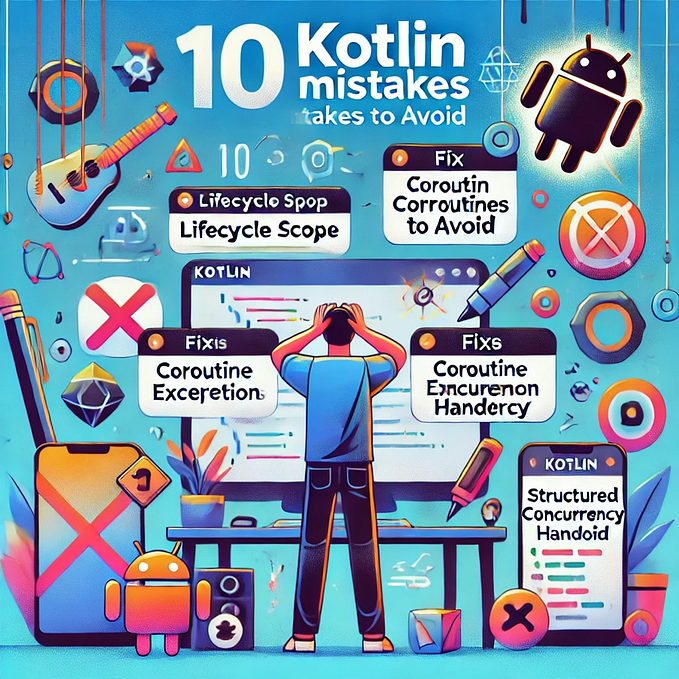Optimize java byte code
Best practices that should be followed

The intention of this article will be to convince android developers (Java or Kotlin) to incorporate the following mentioned practices in how they write their source code in their personal or work projects in order to produce optimized java byte code. The benefits that the developers will reap from these practices are the following:
- Reduce total method count, and make optimized use of
65kmethod count limit imposed bydex. - Save space and time by removing redundant bridging logic from the byte code.
- Save space and time when using
Collectionslibrary. - Understand how new features introduced by latest Java versions are backward compatible.
Lets start the discuss by first observing how byte code world is different than the source code world, and how are perceptions at the higher abstracted source code level actually lies to us. Below we have an empty Java class called Example.java, whose source code looks something like this:
class Example { }After we compile the above class using javac, and generating Example.class, we can sort of peek into this new generated Example.class with the help of a tool called javap. javap ships within the JDK itself. Running javap Example will produce the following result:
Example.class
class Example {
Example();
}Right away we start seeing the differences between source code and the transformed byte code. Even though we did not define any constructor for our Example class, there is a constructor method Example() present in its byte code.
dex, which takes in the Java byte code and converts it into dex code is present in every android SDK, and one add it to their environment’s classpath for quick access. Running dex on Example.class will create Example.dex as expected. Peeking directly into Example.dex is not quite possible, however another tool called dexdump (also present in android SDK, in platform specific version) to fetch the information that we need for our Example.dex file. Upon running dexdump Example.dex, we get the following:
Example.dex
Processing 'Example.dex'...
.
.
.
method_ids_size : 2
.
.
.Redundant data has been redacted from the dex dump, because what we value currently is the total method count of our Example.dex, which is indicated by this field called method_ids_size. Quite to our surprise, there are 2 methods present in our final Example.dex file. We can view these methods in the dex dump using dexdump, and they are:
Example <init>()
java.lang.Object <init>()So in reality, our compiled Example.class contained not 1, rather 2 methods, and this would’ve been unknown to us if we never actually dumped this class using dexdump. To understand the source of these methods, we run javap -c Example:
Example.class
Compiled from "Example.java"
class Example {
Example();
Code:
0: aload_0
1: invokespecial #1. // Method java/lang/Object."<init>":()V
4: return
}What we are seeing is java byte code syntax, which follows opCode argument1 argument2 format. As JVM makes use of local variable array and operand stack, 0: aload_0 simply indicates to load value 0 in the array. What we are after is the statement 1: invokespecial #1 which calls the Object class constructor. The reason why this exists is the fact that every class call the super of its parent class, which in this case is Object class. To sum up, our ‘empty’ Example.java eventually lead to contributing 2 items in the total method count of the 65k dex limit. This was a small example to show how our perception of the source code starts to become false at the byte code level.
invokespecialis1out of4opcodes in its category, others beingivokeinterface,invokevirtual,invokestatic.
A nice segway from here would be about what should be done at source code level, so that the byte code is optimized, and so is the dex code. One such instance is the case of nested classes, which were introduced after Java 1.0. We often encounter code in our projects that look like below:
ItemsView.java
class ItemsView {
private class ItemsAdapter {
}
}This is a pretty common instance in android world, where the adapter implementation is nicely present in its view class scope. Lets proceed further by compiling our ItemsView.java using javac and running javac ItemsView.java. What we get is not 1 class file, but 2 class files, namely:
ItemsView.classItemsView$itemsAdapter.class
To reference back to how we perceive source code, our above example clearly states that the concept of nested classes only exist at the source code level, and java does not really have nested classes (at the byte code level), otherwise we would have only seen ItemsView.class file. using javap on both of these classes, we can see their constructs:
ItemsView.class
class ItemsView {
ItemsView();
}ItemsView$ItemsAdapter.class
Compiled from "ItemsView.java"
class ItemsView$ItemsAdapter {
final ItemsView this$0;
}This means that even though we nesting two classes as shown above, what we are practically getting are two classes next to each other in their package space as shown below:
public class ItemsView{}class ItemsView$ItemsAdapter {}
However, we know that an inner class, such as ItemsView$ItemsAdapter can access the private members defined in the scope of its outer class, which is ItemsView in this case. So how is it possible? Clearly on the byte code level, there is no such thing as nested classes. So how does byte code achieves the same behavior?
public class ItemsView {
private static String displayText(String item) {
return "";
} private class ItemsAdapter {
void bindItem(TextView tv, String item) {
tv.setText(ItemsView.displayText(item));
}
}
}
The answer can be easily found by running javap -c ItemsView$ItemsAdapter:
ItemsView$ItemsAdapter.class
class ItemsView$ItemsAdapter {
void bindItem(android.widget.TextView, java.lang.String);
Code:
0: aload_1
1: aload_2
2: invokestatic #3 // Method ItemsView.access$000:...
5: invokevirtual #4 // Method TextView.setText:...
8: return
}The opcode that we are interested in is 2: invokestatic #3 // Method ItemsView.access$000:…. We never created any access$000 method for ItemsView class, but clearly its there. This is what is known as synthetic accessor method. Running javap -p ItemsView further proves the presence of accessor method access$000 in its byte code:
ItemsView.class
class ItemsView {
ItemsView();
private static java.lang.String displayText(...);
static java.lang.String access$000(...);
}Its not hard to imagine what’s going on here. Due to the fact that there is no class nesting at byte code level, and to solve the problem of accessing a private member of an outer class, an accessor method is generated automatically which simply serves the purpose of delegation. At source code level, this will simply mean the following:
ItemsView.java
public class ItemsView {
private static String displayText(String item) {
return "";
} static String access$000(String item) {
return displayText(item);
}
}public class ItemsView$ItemsAdapter {
void bindItem(TextView tv, String item) {
tv.setText(ItemsView.access$000(item));
}
}
The question that should be asked at this point is: why should I bother about these synthetic accessor methods and the way JVM does its job? The answer: run dx and see for yourself. The accessor method will still be present in the final dx class file, and is contributing to your 65k method count limit. Proguard or D8 can sometimes eliminate these synthetic accessor methods, but there is no guarantee.
Now comes the interesting part: How do I stop the generation of synthetic accessor methods and save my 65k method count limit? The simplest solution to this problem is to mark the private outer class member to package-scoped:
ItemsView.java
public class ItemsView {
static String displayText(String item) { // No more private
return "";
} private class ItemsAdapter {
void bindItem(TextView tv, String item) {
tv.setText(ItemsView.displayText(item));
}
}
}
Now upon running javap -p ItemsView, you will notice there are no accessor methods present anymore.
Moving along the same path, generics is another case marked by these synthetic accessor methods. Below is a pretty common use case, where we have a single access method interface, commonly known as SAM:
Callbacks.java
interface Callback<T> {
void call(T value);
}class StringCallback implements Callback<String> {
@Override public void call(String value) {
System.out.println(value);
}
}
Running javap -p StringCallback shows us how every method that takes in a generic of type T produces two methods:
public void call(java.lang.String)public void call(java.lang.Object)
StringCallback.class
Compiled from "Callbacks.java"
class StringCallback implements Callback<java.lang.String> {
StringCallback();
Code:
0: aload_0
1: invokespecial #1 // Method java/lang/Object."<init>":()V
4: return
public void call(java.lang.String);
Code:
0: getstatic #2 // Field java/lang/System.out:Ljava/io/PrintStream;
3: aload_1
4: invokevirtual #3 // Method java/io/PrintStream.println:(Ljava/lang/String;)V
7: return public void call(java.lang.Object);
Code:
0: aload_0
1: aload_1
2: checkcast #4 // class java/lang/String
5: invokevirtual #5 // Method call (Ljava/lang/String;)V
8: return
}
This is also true for the case where a methods returns a generic type of value T. Covariance also plays a role in generating another method for each of the sub-types of this return type T, as shown below:
Providers.java
interface Provider<T> {
T get();
}class TextViewProvider implements Provider<View> {
@Override View get() {
...
} @Override TextView get() { // TextView extends View, and can be passed as the return type
...
}
}
Running javap -p TextViewProvider will show 3 methods, one of Object type, one for TextView, and another for View. Proguard or D8 can again sometimes help in removing the Object method as its simply doing the type casting, however this is not guaranteed, and is something that should be kept in mind.
There are some other micro-optimization tips that can be followed in tandem with optimizing our byte code to generate code that executes faster:
- Use
SparseArrayinstead ofHashMap. Object overhead is3times more in the case ofHashMap, and there is more re-directing in aHashMap. Only applies when data to be stores in small and in the range of hundreds, and not thousands. - Instead of initializing an empty list, try to initialize the list with a fixed size:
public List<String> names(List<User> users) {
List<String> names = new ArrayList<>(); // bad practice
for(User user: users) {
...
}
}In JVM, the default size for an empty ArrayList will be size 10. So if our users is greater than 10, then at the 11th entry, a new List<User> will be created and the contents of our original list will be copy-pasted in the new one. A good solution to the above will be the following:
public List<String> names(List<User> users) {
List<String> names = new ArrayList<>(users.size());
for(User user: users) {
...
}
}- Calling an instance method multiple times. Take a look at the example below:
@Override protected void onCreate(Bundle bundle) {
super.onCreate(void); setTitle(getResources().getString(R.id.title));
getWindow().setStatusBarColor(
getResources().getColor(R.color.blue)
); headerOffset = getResources().getDimensionPixelSize(R.dimen.header_offset);
headerTop = getResources().getDimensionPixelSize(R.dimen.header_top);
animationHeight = getResources().getDimensionPixelSize(R.dimen.animation_height);
}
getResources() is getting called at multiple places, and every call will have its overhead. A better solution to the above would be:
@Override protected void onCreate(Bundle bundle) {
super.onCreate(void);
Resources res = getResources();
setTitle(res.getString(R.id.title));
getWindow().setStatusBarColor(res.getColor(R.color.blue)); headerOffset = res.getDimensionPixelSize(R.dimen.header_offset);
headerTop = res.getDimensionPixelSize(R.dimen.header_top);
animationHeight = res.getDimensionPixelSize(R.dimen.animation_height);
}
This article was heavily inspired by Jake Wharton’s talks he gave on the same topics. All the links are mentioned below:








